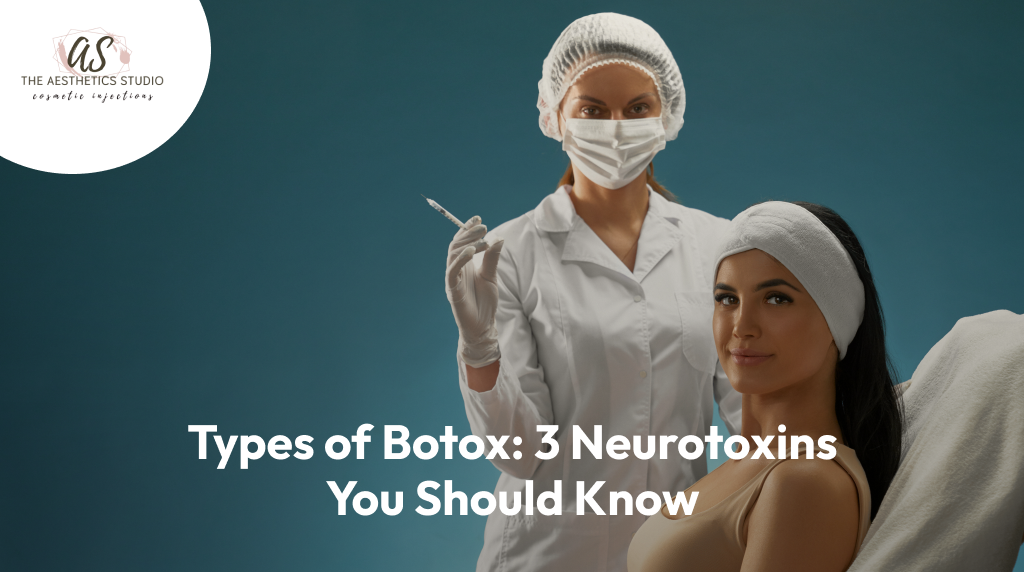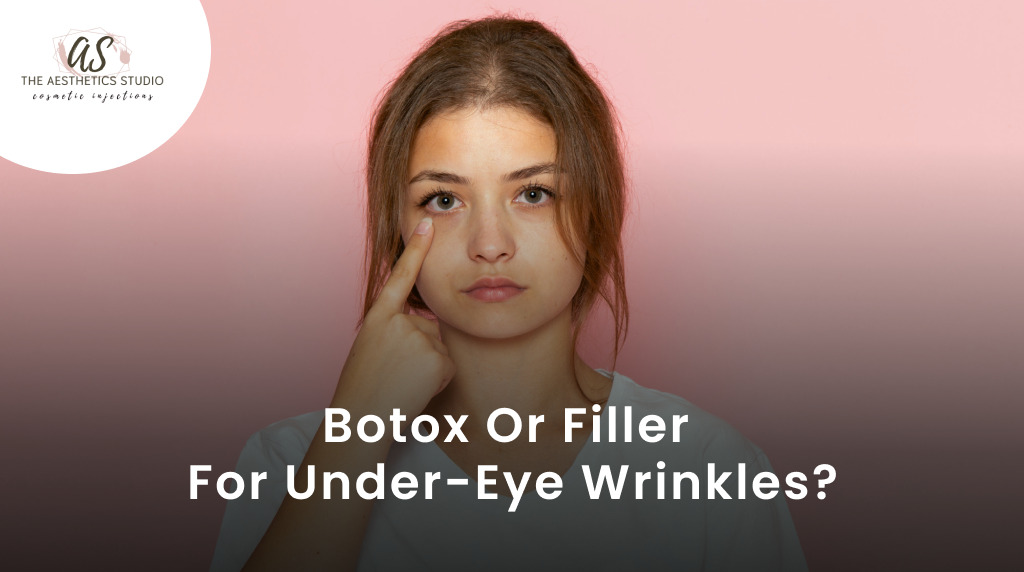Understanding Skin Tones and Botox Treatment
The Various Skin Tones and Their Traits
When considering Botox Treatment, understanding the different skin tones is important for getting the best results. Let’s see what each of them is characterized by:
Fair Skin Tones:
Fair skin tones are usually quite light and easily damaged by sunlight, producing freckles as well as redness. They may also show signs of early aging such as fine lines or wrinkles.
Light Skin Tones:
Light skin tones have slightly more pigmentation than fair-skinned people do, which makes them prone to sunburns too. When these individuals age, they may develop crow’s feet that appear around their eyes, parallel forehead lines and frown lines.
Medium Skin Tones:
Medium skin tones have higher quantities of melanin that provide some natural protection from the sun. However they can still get dynamic wrinkles just like those caused by smiling or frowning.
Olive Skin Tones:
Olive skin tones possess a warm undertone and produce more melanin that makes them less susceptible to sun damage. Nevertheless, wrinkles might appear around the eyes, forehead and mouth due to repetitive facial expressions.
Dark Skin Tones:
Dark skin tone is characterized by high levels of melanin content which provides excellent protection against the sun. Nonetheless their aging process may result in deep wrinkles, hyperpigmentation plus uneven complexion.
Read also: Types of Botox: 3 Neurotoxins You Should Know
Botox and How It Works on Different Skin Tones
The bacterium Clostridium botulinum produces the neurotoxin Botox that works by temporarily freezing the muscles in charge of generating wrinkles. While the process remains constant for all skin colors, here are some things you should know about how effective it is for different skin tones:
Efficacy of Botox on Fair Skin Tones:
Botox usually works well on fair skin tones. Fine lines and wrinkles which are often seen on fair skin can be softened away, to give a more youthful look on the face.
Results of Botox Treatment for Light Skin Tones:
In people with light skin tones, Botox plays a significant role in reducing wrinkles. It is capable of smoothening crow’s feet, forehead creases and frown lines thereby giving them a relaxed appearance with freshness as well.
Botox Considerations for Medium Skin Tones:
Medium complexion may require slightly increased doses of Botox due to elevated muscle mass; however, this type of injection can treat dynamic wrinkles effectively when conducted by competent practitioners.
Botox and Olive Skin Tones: What You Need to Know:
Olive skin toned individuals may be good candidates for Botox treatment. However, this should be done cautiously so as to ensure that they retain their natural appearances without changing their original color.
Botox and Dark Skin Tones: Exploring the Nuances:
One must be very careful when treating dark-skinned patients with Botulinum toxin. In order not to cause any hyper or hypo-pigmentation one need opt skilled practitioner selection and proper aftercare procedures.
Differences in Botox Approaches Based on Skin Tones
In delivering Botox, every skin complexion requires its own approach. Below are some essential considerations for each of the complexions:
Injection Techniques for Fair Skin Tones:
Small thin needles and minimal side effects with injections are significant to avert bruising and swelling in fair skin tones. Skilled clinicians understand that subtle facial expressions yield beauty results.
Tailoring Botox Treatments for Light Skin Tones:
To get the required consequences, light skin tones may need variance in dosage levels. Experienced injectors carefully assess a patient’s facial structure and plan treatment accordingly.
Customizing Botox for Medium Skin Tones:
Because of more muscles, medium-skinned patients often require increased doses. An experienced clinician can evaluate a person’s facial construction so as to fine tune their treatments to look less artificial.
Adapting Botox Treatments for Olive Skin Tones:
During treatment on olive skin tones, the experts must take into account natural pigmentation and muscle build up. Advanced techniques like micro-Botox can be used to achieve excellent results without any alteration in the overall skin complexion.
Special Considerations for Botox on Dark Skin Tones:
More hyperpigmentation and hypopigmentation is seen in dark skinned individuals than whites are. For black African American or ethnic patients who have had darker colored skins, it is important that they go through such procedures only if performed by those who have gained enough experience from similar previous cases and follow up with specific aftercare protocols too.
Choosing a Qualified Botox Practitioner for Your Skin Tone
The Importance of a Qualified Botox Practitioner:
Achieving safe and satisfactory results in Botox treatment is determined by the expertise and experience of a professional. Here are some reasons why choosing a qualified practitioner is necessary;
Why Proper Training and Certification is Necessary:
Only trained and certified specialists should administer Botox injections. Such qualifications ensure that they have the necessary awareness and abilities to carry out this procedure well without any harm.
What You Should Know about Experience Levels:
A seasoned Botox specialist not only knows how to inject correctly, but also understands the subtleties of different skin types. They can modify their treatment plans depending on individual requirements, thereby obtaining optimal results.
Significance of Specialized Knowledge for Different Skin Tones:
The complexity associated with the treatment of various skin tones necessitates specialization. In order to get desired outcomes, professionals should be knowledgeable about characteristic problems as well as requirements connected with each type of skin color.
Researching and Selecting a Botox Practitioner
Getting the right Botox provider for your skin tone can be overwhelming. Here are some steps you can take to make an informed choice:
Seeking Recommendations from Trusted Sources:
There is nothing wrong in asking your friends, relatives or health care professionals about their recommendations. In this way they will give you a first-hand experience of what it is like to be treated by different doctors.
Checking Credentials and Reviews:
Make sure that the qualifications and accreditations of the potential Botox providers are true. Also check for comments and reviews at the Internet written by previous clients as a way of evaluating their standing and service quality towards patients.
Conducting Consultations: Key Questions to Ask:
Arrange appointments with possible practitioners so that you could talk about what specifically bothers you and what your hopes are. Find out how experienced they have been in relation to your skin type, which treatments do they perform, whether they offer personalized care options for each of their patients.
Factors to Consider When Choosing a Practitioner for Your Skin Tone
When selecting a Botox provider, you must consider certain factors regarding your skin complexion:
Expertise in Treating Fair Skin Tones:
Question about the experience of the practitioner in dealing with light complexions. They should know that fair skin has distinct challenges and have previously done procedures that were successful.
Experience with Light, Medium, and Olive Skin Tones:
Make sure your doctor has been treating people of different skin colors. They should be aware of what things to put into consideration while dealing with each color.
Understanding of Dark Skin Tones and Botox Treatment:
Due to higher risks associated with dark skin, an expert knowledge is necessary. Select a person who can handle this kind of delicate treatment on dark people as well as offer necessary care afterwards.
Maintaining Botox Results for Different Skin Tones
Post-Treatment Care for Fair and Light Skin Tones
To maintain Botox results for a fair and light complexion, take note of the following post-treatment care:
Skincare Routines to Enhance Botox Results:
Include hydration-focused skincare programs in your routine to improve and prolong the effects of Botox. For your skin type, use gentle cleansers, moisturizers and sunscreens.
Protecting Fair and Light Skin from Sun Exposure:
Sunburn can cause aging quickly and decrease how long Botox treatments last. Remember to apply broad spectrum sunscreen with an SPF of at least 30 alongside wearing protective clothing and sunglasses when going outdoors.
Recommended Products for Optimal Skincare:
Find out from a skin care professional which products are best suitable for your skin type. Some examples include vitamin c serums, retinol creams, and hyaluronic acid moisturizers that keep one’s skin looking young until the next Botox appointment.
Maintaining Botox Results for Medium and Olive Skin Tones
Botox treatment efficiency can be maintained if special care is taken of medium and olive skin tones that are prone to dryness. Here’s what to consider:
Medium Skin Tone Care Routine:
Medium skin tone is expected to keep its moisture and shield from sun damage. Look for green tea extracts and vitamin E in the products which contain antioxidants as part of your skincare routine.
Sun Protection Strategies for Olive Skin Tones:
Even though olive skin has a natural defense towards sunlight, it should be protected from harmful UV rays. Choose oil-free sunscreens since they may not bring about any breakouts and consider wearing hats or staying under shade when the sun is at its highest.
Recommended Products and Treatments for Optimal Results:
Combine peptides, ceramides, niacinamide among other ingredients into your regular skincare routine. Alternatively, you can do other things like having facial or going for chemical peels that will work well with Botox regimens resulting in a healthier looking skin.
Long-Term Care for Dark Skin Tones After Botox
Long-term maintenance of the Botox results and common concerns peculiar to dark skin tones require some specific attention. Here’s what you need to know:
Special Considerations for Dark Skin Tone Skincare:
To avoid hyperpigmentation and maintain an even complexion, dark skin requires special care. Avoid strong products, use mild cleansers, moisturizers and exfoliating creams designed for black skins.
Protecting Dark Skin from Hyperpigmentation:
Dark skin tones should be protected from sunburns in order to prevent hyperpigmentation; therefore, it is important to use broad spectrum sunscreen with at least SPF 30 and stay in shade during peak hours of sunshine. Protective clothing and hats are other options that may be considered when one is out under the sun.
Recommended Post-Treatment Skincare Routine:
After Botox treatment, a consistent skincare regime should always include gentle cleansing, moisturizing and SPF protection. Consult a skincare specialist who has expertise in caring for dark skin about appropriate products that would suit your particular needs best.
Read also: Botox or Filler for Under-Eye Wrinkles?
Potential Risks and Side Effects of Botox for Different Skin Tones
Common Risks and Side Effects for All Skin Tones
However, Botox is safe when given by a trained expert, but also there are certain prevalent risks and side effects that one should be aware of:
Bruising and Swelling:
It is usual to have temporary bruises or swelling at the place where the injection has been made. This can be minimized by using cold compresses and avoiding drugs that may thin blood before going for the procedure.
Temporary Weakness in Injected Muscles:
Botox weakens specific muscles temporarily. In some situations, this may lead to temporary weakness or sagging of surrounding muscles. Nonetheless, these symptoms typically end after a few weeks.
Headache or Flu-like Symptoms:
Some people may develop mild headaches or flu-like symptoms after receiving Botox injections. These consequences are often transient and can be mitigated with non-prescription pain relievers.
Risks and Side Effects Specific to Light and Fair Skin Tones
Light skinned and fair complexioned people are at higher risk of the side effects. These include the following:
Increased Sensitivity and Risk of Hyperpigmentation:
This could be explained by increased sensitivity to the site of injection among light skinned and fair complected patients, which can be temporary redness or hyperpigmentation. This is why one should take precautions against excessive sunlight exposure in order to avoid such risks.
Possibility of Skin Irritation and Redness:
People with light or fair skin may develop a temporary irritation or a reddish reaction at the site where injections were done. By using the right techniques while performing the procedure during after treatment care practices, physicians will minimize this effect.
Addressing Potential Allergic Reactions on Light Skin:
Though in a few cases, allergic reactions to Botox might occur. People having light skin tones need to reveal their doctors on any allergies they have since these may result in complications.
Risks and Side Effects Specific to Medium, Olive, and Dark Skin Tones
Botox treatment may have different risks and side effects depending on different skin tones. Here’s what you should know;
Aftercare is necessary to prevent hyperpigmentation:
Hyperpigmentation is more common in medium, olive and dark skin tones. Therefore, practitioners must give complete care instructions after a procedure in order to reduce the possibility of pigment changes.
Potential Hypopigmentation Risks for Those with Medium Skin Tones:
Botox injections can change the base level of pigmentation on medium skins. In this regard, it is important for a clinician to consider the client’s skin tone while carrying out Botox treatment so as to avoid hypopigmentation.
Curing Dark Skin Post-Botox Hyperpigmentation:
People with dark complexion stand higher chances of having post-Botox hyperpigmentation. To minimize this risk, qualified experts can use appropriate procedures such as perfect injection techniques and expert post-treatment care.
Conclusion
In conclusion, achieving optimal Botox results across diverse skin tones requires a tailored approach and qualified practitioners. Choosing experienced professionals, understanding specific aftercare needs, and adapting skincare routines contribute to lasting effects. Awareness of potential risks is crucial, emphasizing the importance of cautious treatment. For expert Botox care, book appointments at The Aesthetics Studio.
Frequently Asked Questions:
Q1. How does Botox work on different skin tones?
Botox freezes muscles, temporarily reducing wrinkles, with varying efficacy based on skin tones.
Q2. How to maintain Botox results for different skin tones?
Follow post-treatment care routines, including skin care tailored to each skin tone, sun protection, and using recommended products.
Q3. What considerations are important for each skin tone during Botox treatment?
Fair skin may require small needles; light skin may need varied dosage; medium skin may need increased doses; olive skin should be treated cautiously; dark skin needs skilled practitioners













